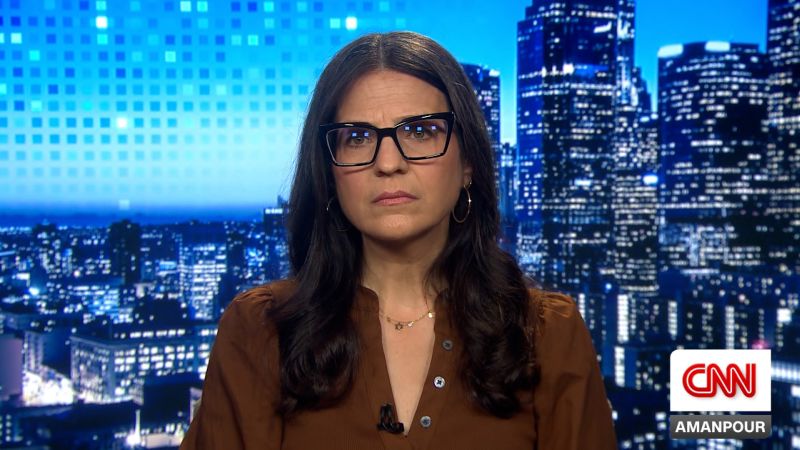With the 10th anniversary of Hurricane Sandy around the corner, Mayor Adams unveiled new details about the city’s resiliency efforts around its coastline and its long-term plans to guard against severe storm-surge flooding.
His announcement Wednesday at Pier 35 in lower Manhattan was intended to highlight the city’s progress when it comes to resiliency, and it focused primarily on new flood walls the city intends to build along the Lower East Side.
But it came the same day City Council members grilled some of his top staffers over the city’s progress 10 years after Sandy devastated the city on Oct. 29, 2012, causing the deaths of 44 New Yorkers and billions of dollars in property damage — much of it in New York and New Jersey.
“We still feel that pain,” the mayor said on the shore of the East River with the Manhattan and Brooklyn bridges as a backdrop. “We don’t have another 100 years to prepare. We have to prepare now. Climate change is here, it’s clear and it’s a present danger.”
:quality(70)/cloudfront-us-east-1.images.arcpublishing.com/tronc/FX3HEGLM7VGZBNPAQ6PEMUEFEE.JPG)
The retractable flood wall initiative Adams was highlighting is part of the Brooklyn Bridge-Montgomery Coastal Resilience project, one of several post-Sandy efforts intended to harden the city’s coastal areas against severe flooding.
The wall will consist of more than 100 flipup gates, which will run along South St. near Jefferson St. and south closer to the Brooklyn Bridge. Ninety-three of the 9-foot-tall gates are powered by hydraulics and can be moved with the press of a button. More than a dozen other gates must be opened and closed manually.
“The project will be complete by 2026,” said Thomas Foley, commissioner of the city’s Department of Design and Construction.
:quality(70)/cloudfront-us-east-1.images.arcpublishing.com/tronc/2J3NDDWCN5FS7H6BYH2X5J5RM4.jpg)
The portion of the wall Adams broke ground on Wednesday is expected to cost $350 million and is being paid for through federal funding.
Just hours after Adams’ press conference, though, his team took flak over the fact that they were late in submitting a 10-year resiliency plan to the Council, as required by law. The plan, which was due Sept. 30, was posted online Wednesday morning, just hours before a Council hearing on resiliency.
“This plan is a critical tool in the city’s toolbox so we are protected against the effects of climate change, but we are still waiting for that plan,” Brooklyn Councilman Ari Kagan, chairman of the Council’s Committee on Resiliency and Waterfronts, said at the outset of the hearing.
In prepared testimony, Environmental Protection Commissioner Rohit Aggarwala didn’t elaborate on what caused the delay. He said the administration opted to keep the plan as a “web-based resource” instead of as a formal document submitted to the Council because “resilience planning requires neighborhood engagement.”
Kagan wouldn’t drop the issue and demanded more specifics, asking why the web-based plan doesn’t track resiliency projects in real-time.
Kizzy Charles-Guzman, executive director of Adams’ Office of Climate and Environmental Justice, said the resource is still a work in progress.
“I’m not saying it’s perfect, I’m not saying it’s beautiful,” she said. “We will get there.”
:quality(70)/cloudfront-us-east-1.images.arcpublishing.com/tronc/HCX265NPCVDGRKKETL3S5QTZVQ.JPG)
Asked what his team has been up to since he last testified before the Council in April, Aggarwala said it’s been “a busy six months,” citing climate-related policy he contributed to Adams’ housing plan, work on ongoing resiliency efforts in Howard Beach and Rockaway Beach and coordination with the U.S. Army Corps of Engineers on other related projects across the city.
But Aggarwala acknowledged that the nature of city government bureaucracy has prevented him from getting as much done as he would’ve hoped.
“A key challenge facing resilience efforts is that city projects move too slowly,” he said.
A major sticking point is the fact that nearly all resiliency projects require rigorous review from local elected officials and input from community members, Aggarwala said. He added that’s “going to have to change” for substantial progress to ensue.
“We can’t pretend that we’re going to always reach consensus,” he said.
As climate change is expected to bring more destructive storms to the city, Aggarwala said it’s also incumbent on New Yorkers to use best practices during extreme weather events.
“We should not be going out in dangerous conditions,” he said. “We should not be ordering the burrito and make somebody bring it to us during dangerous conditions.”





:quality(70)/cloudfront-us-east-1.images.arcpublishing.com/tronc/FX3HEGLM7VGZBNPAQ6PEMUEFEE.JPG)
More News
Legal Aid demands probe of NYPD’s ‘unlawful’ detention of pro-Palestine protesters
Judge Merchan threatens Trump with jail time for gag order violations in hush money trial: Live updates
ABC News president Kim Godwin steps down, Trump says ‘GOOD RIDDANCE’